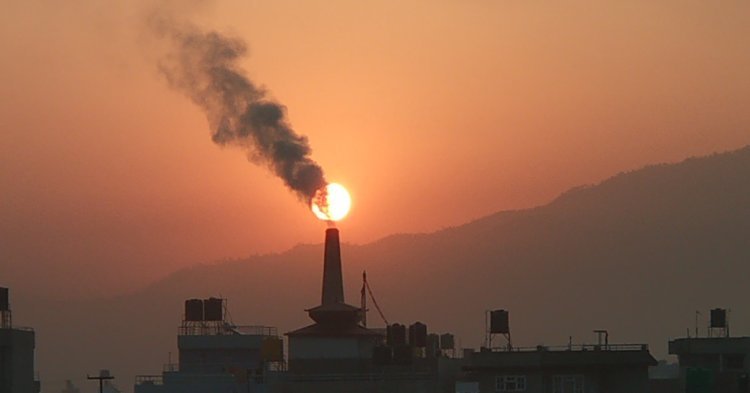The restriction of PFAS (per- and polyfluoroalkyl substances) is being discussed as the biggest ban of any chemical group ever. While we all know – and worry – about things like microplastic, the discussion around PFAS has been rather new to the media agenda. In terms of a chemical, it is equivalent to nuclear waste – impossible to get rid of or recycle, persistent and responsible for serious organic damage. A report by Strg-F looked at a production facility in Germany around which the population is prohibited to donate blood. For good reasons, as the contamination of the environment around the facility is so high that it surpasses non-concerning levels. Exposure can cause cancer, interfere with the hormonal system and may cause reproductive issues.
What makes the ban so special?
Many chemicals are restricted in the European Union and the regulation for the Registration, Evaluation, Authorisation and Restriction of Chemicals (REACH) from 2007 makes it possible to do this EU wide. The European Chemicals Agency (ECHA) manages the procedures laid out under REACH, amongst other things the PFAS restriction proposal. Strict chemical restrictions are not uncommon in the EU. What is uncommon however, is to ban an entire chemicals group, as the environmental and health agencies of Denmark, Germany, the Netherlands, Norway and Sweden have asked ECHA to do. Especially when the group consists of thousands of compounds (the restriction proposal estimates 10k). It would make the ban the biggest ever. Even more noteworthy, the ban is not targeting some strange chemical group. PFAS are all around us: your shoes are coated in it, so is your jacket, your coffee-to-go cup would be just wet paper without it, the pan you use for your breakfast eggs, the electronics in your computer and medical devices in the hospital – in short almost everything.
PFAS by itself are incredibly useful as they are very durable under extreme conditions, the presenter of the restriction proposal noted. Their thermal and electrical insulation properties on top of their non-adhesive properties make them indispensable for many industries. Responsible for that are their carbon-fluoride bonds, which are amongst the strongest chemical bonds known. Despite their usefulness, their durability also means they hardly break down and remain in nature almost forever, polluting the groundwater and with that everything else. Being so persistent in nature also means that the overall contamination just increases over time and already now, from penguins in the Antarctic to rainwater in Tibet, contamination can be found.
Why a full ban?
Some PFAS groups are already regulated, not just in the EU. Despite efforts to reduce the concentration of these substances in the environment, as the documentary “The devil we know” illustrates, this often fails. Industry spills appear to be common and clean-up efforts are usually futile. When one particular substance found to be harmful is banned, it is quickly replaced by a similar substance from the PFAS group. While until now levels within humans might have been below what is deemed problematic, one could easily see how this will change with the continuous release of PFAS. In the debate so far, industry has suggested the problems around spills into nature are manageable. The supposed measures are neither set up nor regarded as realistic. Even if direct environmental contamination from accidents and production facilities was manageable, PFAS would still enter the environment through abrasions from everyday products or when those products inevitably end up in landfills at the end of their lifecycle. Being so persistent means the overall amount in the environment will rise inevitably. So although banning an entire chemicals group as important as PFAS might seem drastic, there is a reason behind it. On closer look the ban is not as strict as suggested, but already caters to exceptions to industry.
What has been dubbed in the media as the “forever ban” (due to PFAS being called forever chemicals) is actually a ban with use-specific time derogations. In other words, exceptions for industries that don’t yet have alternatives or will not have in the foreseeable future. Depending on the evaluation of the proposal for cases where there are no alternatives identified so far the exception is five or 12 years. In some few instances such as medical and military applications time unlimited derogations are suggested.
The last stand
On the 22nd of March the public consultation started, which lasts for half a year and is open for anyone to hand in evidence towards a certain case. What follows is a comitology procedure with scrutiny. A legislative procedure not in place anymore but still used, due to being written into over 300 legal acts, among them REACH. This means, following the open consultation and the adoption of opinions from two advisory committees, the European Commission will be given three months to draft an amendment to REACH Annex XVII which lists prohibited and restricted substances. The Council and Parliament can veto this, but have no further say in it.
During the next months, industry will rally to shoot holes into the proposal and to hand in evidence that their respective use should be derogated. After all, some industries cannot function without the chemicals, and viable alternatives are far out of sight. To determine how the evidence should be interpreted will be up to the parties involved in the process. Whatever the outcome of the final proposal – it will greatly decrease the contamination over the coming decades. If the procedure follows the normal timeline, an amendment can be expected by the end of 2024, although unlikely.

Follow the comments: |
|
